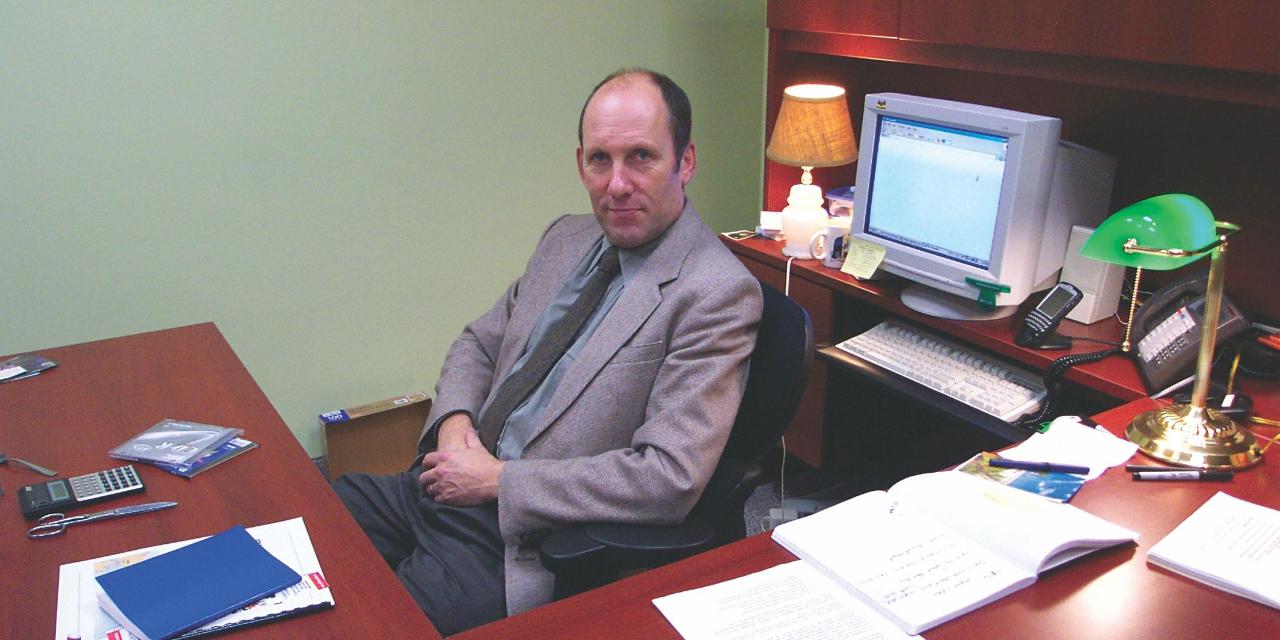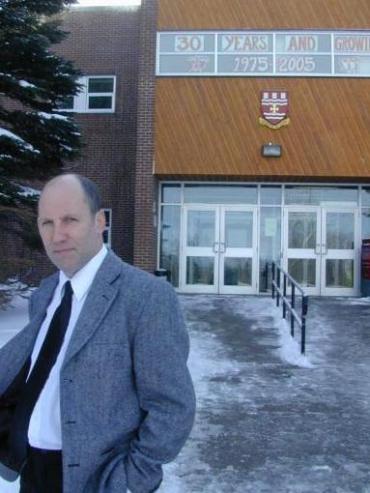Football, folklore and fearlessness
Like any good Englishman, Dr. John Ashton was passionate about soccer. In his case, Yorkshire’s Barnsley FC, his hometown club. And he must have been thrilled when Barnsley won the 2006 League One championship to be elevated into the English Football League Championship division.
Dr. Ashton was also passionate about his second home, Sir Wilfred Grenfell College.
He arrived in Newfoundland and Labrador in 1975 to pursue a PhD in folklore. His thesis, titled A Study of the Lumbercamp Song Tradition in Newfoundland, filled a hole in the province’s folklore by concentrating on the woods and the lumberjack rather than the sea and the fisherman, as had typically been the focus of traditional scholarship.
The year 1982 brought him to Corner Brook and Memorial’s Sir Wilfred Grenfell College as a full-time lecturer. Dr. Ashton attracted large numbers of students to his classes and established an archive of students’ research papers at a time when there was skepticism about the merits of folklore as a subject.
He dove headfirst into rural life and the singing and storytelling that gives it such beauty, and he became a recognized folklore scholar and prize-winning writer. His work has appeared in books and scholarly journals across Canada, the United States and Great Britain.
During his 30 years at Memorial, he embraced his new home with fervour. He left an indelible mark on Grenfell, on rural Newfoundland and Labrador and on folklore tradition in the province.
Dr. Ashton would later become head of the Division of Social Science and, in 2004, was named principal of the college.
Throughout his tenure, he made significant progress in fostering international partnerships, developing undergraduate programming and building Grenfell’s research agenda.
He would lead the creation of the Centre for Environmental Excellence, see the completion of the Arts and Science Annex and begin planning for a new academic building, library extension and additional residences.
In other words, he led the transformation of the college from a junior west coast college into a beacon of strong post-secondary education on the west coast.

Dr. John Ashton at his desk in 2004. Photo from Grenfell Campus Archives.
He was passionate about the school and the west coast and rallied an entire region to mobilize a shared vision of what Grenfell could be.
As a skier, kayaker, trout fisherman and hiker, he saw a parallel between the development of Grenfell College and the west coast in general – two of his greatest loves.
And it was that love that had him fight for increased autonomy for Grenfell, something the provincial government under Premier Danny Williams began to look at seriously in the mid-2000s.
In 2007, the Newfoundland and Labrador government commissioned a report on the issue, which recommended greater autonomy for Grenfell but stopped short of full independence.
As a result, rather than becoming a separate university, Grenfell was granted increased autonomy, leading to its rebranding as Grenfell Campus, Memorial University in 2010, with the principal becoming a vice-president and a new governance structure.
Sadly, Dr. Ashton would never see the increased autonomy he so fervently advocated for. Nor would he see his beloved Barnsley FC remain in the Championship division for eight seasons following their 2006 win.
Dr. Ashton passed away in 2008, just two weeks shy of his 56th birthday.
As Premier Williams said at the time of Dr. Ashton’s death, “He left our university strong, vibrant, ambitious and optimistic about its future…. The breadth of his vision was enormous, his enthusiasm was contagious and his resolve to bring Grenfell into its own was unwavering.”
His memory lives on in the John Ashton Cup, an annual fundraising hockey game between faculty/staff and students at Grenfell in support of student awards, and the John Ashton Travel Award.
Dr. Ashton represented the very best of the Grenfell spirit – brave, proud, passionate, tenacious, community-minded – and while his absence continues to be felt, this spirit continues to shape the campus and the community.
